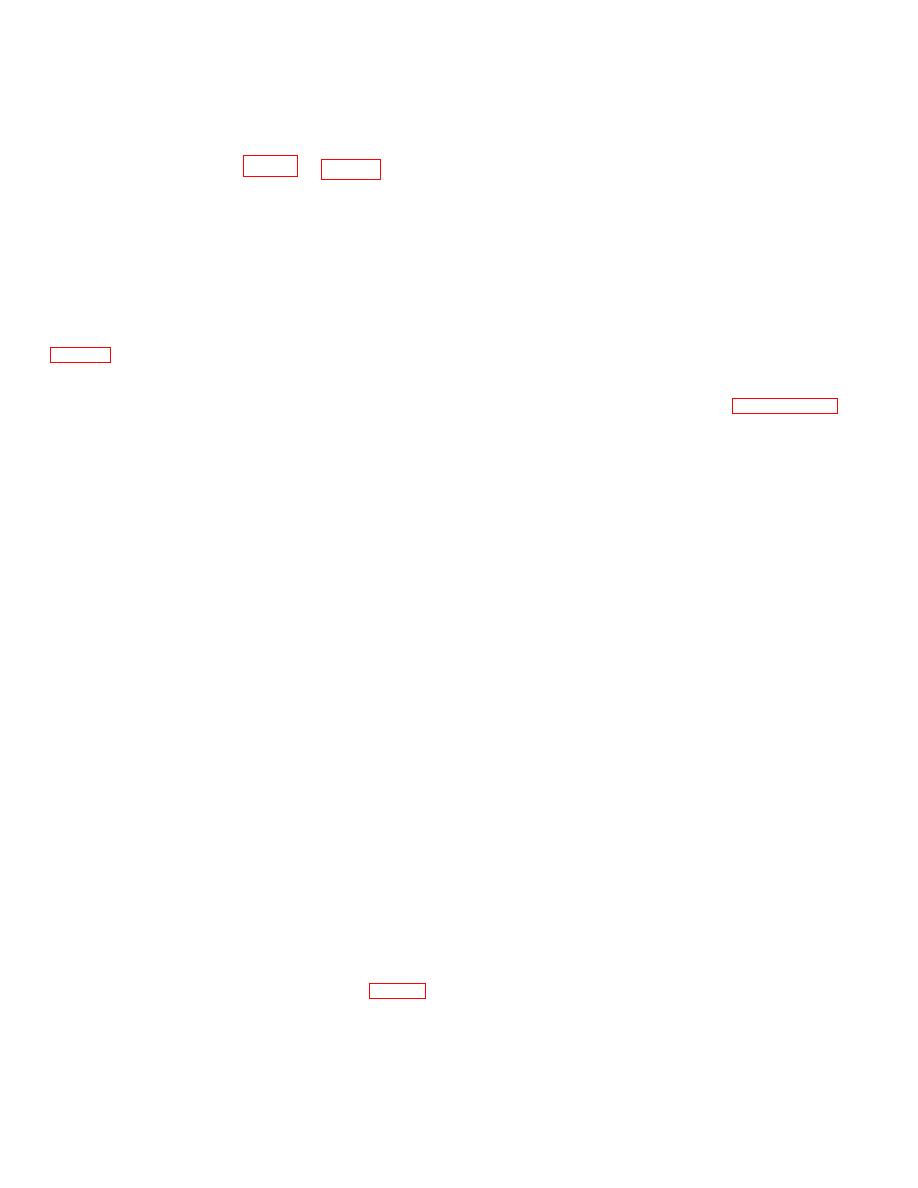 |
|||
|
|
|||
|
|
|||
| ||||||||||
|
|
 quired, by local safety regulations.
tank application. It contains a permanent dye and the
a. Install temporary plugs or other closures to cover
solids content is controlled in the range of 17-19 percent.
b. The EC 776 SR contains a dye which is soluble in
all openings except fuel inlet. Do not coat fuel inlet caps
fuel and fades out after vehicle operation. It also allows
or threads in fitting openings.
a broader solids content range of 17-22 percent. The EC
776 SR coating can be used until stock is exhausted or if
and-drain or by slush coating. If fill-and-drain method is
the EC 776 R (TARCOM) coating is unavailable. As the
used, invert tank or agitate to assure coating of top
solids content increases, and the material is more
interior surfaces. In slush coating, fill about 20 percent of
viscous, coating application and thickness are affected.
tank capacity and manipulate tank for a sufficient time to
c. The PRC 1005 L coating is generally similar to
wet all surfaces. Assure that enough coating flows to
the specified 3M Company coatings. The solids content
both sides of baffles before slushing. This procedure is
is controlled in the 19-20 percent range and has soluble
not recommended for large capacity tanks which cannot
red dye.
be removed from the vehicle.
c. Remove temporary plugs and other closures and
d. When the coating material is reused, the solids
drain excess coating material which may be reused (see
content increases as a result of solvent evaporation.
The original viscosity can be restored by adding Methyl
draining, begin passing compressed air at about 10 psi
Isobutyl Ketone (MIBK) to readjust the solids content to
through tank. Continue passing air for approximately 3-5
the original range.
e. Procedures are outlined in paragraph 11 for
minutes after coating flow slows to occasional drops.
The air flow rate (cfm) should approximate one air
measuring the solids content and calculating the amount
change per minute during this operation, and also during
of solvent to add to restore the desired solids content
the curing operation.
and viscosity. Be sure to add solvent slowly to coating
d. Inspect to insure complete coverage. Recoat, if
while mixing.
necessary. The coating contains a red dye to aid
11. Measurements for Controlling Coating Solids
inspection.
Content. a. Measurement of solids content:
e. Move tank to curing location with a minimum
(1). Weigh container with cover (2 oz. ointment
of delay. If the curing location is remote from coating
can or similar lightweight container) to nearest milligram
location, temporarily cover tank openings to avoid
(0.001 gram) (w,) and record weight. It is preferred to
escape of solvent vapors into uncontrolled areas while
run three samples and average.
transporting.
(2). Spread a few grams of coating material
f. Cure coating by one of the following optional
over bottom and side interior surfaces of container, close
methods with minimum delay after coating:
cover immediately, and weight to nearest milligram
(1) Oven cure by baking tank at 250'F. : 5'F.
(W2).
for 1
(3). Remove cover and place both container and
hour, passing dry air through tank continuously at ap-
cover in air circulating oven at about 200'F.-225'F. After
proximately 10 psi.
approximately 10 minutes, remove from oven, replace
WARNING
cover, and cool. Weigh to nearest milligram (W3).
(4). Compute the solids content using the
Ovens shall comply with NFPA No. 86A,
following:
Standard for Ovens and Furnaces.
formula:
(2) Air cure at 70'F.-120'F. for 16-24 hours,
W3 - W1 x 100
% solids =
passing dry air through tank continuously at
W2 - W1
approximately 10 psi.
g. Upon completion of curing, check tank interior
where:
atmosphere with an explosimeter (para Sc). Reading
should indicate 10 percent (or less) of Lower Explosive
W1 = weight of container
Limit (LEL).
Cap all tank openings and repeat
W2= weight of container and wet coating
explosimeter readings after 12-24 hours. Meter reading
W3 = weight of container and dry coating
should be below 10 percent LEL.
b. Calculation of solvent to be added to restore
h. Reinstall fittings or plugs to cap all tank openings.
desired solids content:
i. Clean application equipment with methyl isobutyl
KS
ketone before coating has set up or cured.
Gals of coating x DS - gals of coating - gals of solvent to
add where:
10. Explanation of Manufacturers Coatings (table 1).
KS = KNOWN % solids
a. The 3M Co. EC 776 R (TARCOM) and EC 776 SR
DS = Desired % solids
coatings are almost identical. EC 776 R (TARCOM)
coating is being specially manufactured for Army fuel
3
|
|
Privacy Statement - Press Release - Copyright Information. - Contact Us |